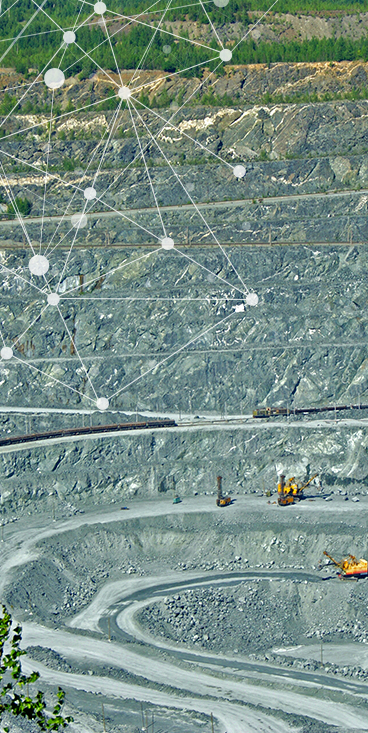By Miles Metschke, Head of North America Freight Rail, Hitachi Rail STS
Freight rail has long been a fundamental driver of the U.S. economy, providing jobs, delivering goods, and connecting businesses to national and international markets. Offering safe, reliable transport, freight rail is important not just to domestic consumers. Globally, U.S. freight rail fuels economies by hauling approximately 35% of U.S. exports.1 Businesses move freight over the land by rail as it offers sustainable transportation. For example, a train uses one gallon of fuel to move one ton of freight nearly 480 miles. Like most industries, freight rail is experiencing rapid transformation enabled by new technologies. Its steady gains in efficiency are improving the environment to make a better world.
Over the past decade, we have witnessed some exciting advances in freight rail technology, as industry leaders worked together to design and implement an entirely new rail system to interconnect and improve safety across the rail network. In 2008, the U.S. Congress mandated Positive Train Control (PTC) as part of its Rail Safety Improvement Act. Financed primarily through private railroad investments and some federal government grants, the PTC system is on track to be fully interoperable by 2020. Today, railroads use this technology to monitor and manage their trains by using specialized computers on the trains and along the trackside. A robust communications network links all of these devices together to provide a better operational picture of the country’s rail network. Best of all, more exciting advances are on the horizon.
Over the last 10 years, PTC 1.0 has been the first step in revolutionizing our freight rail system, and now that it is approaching its completion, the industry is exploring where to go next. Numerous challenges remain, as freight rail organizations explore better ways to add capacity, improve productivity, and move more freight without adding more infrastructure. Fortunately, one of the advantages of PTC is that it provides the network’s scalable technology backbone as an infrastructure platform on which the industry can continue to build.
PTC 1.0 established an interconnected technology foundation for rail, through thousands of edge computers along tracks and on trains across the U.S. The next wave of this system, PTC 2.0, will apply safe design principles, artificial intelligence, analytics and automation to the complex array of data that the trains produce, translating raw data into usable intelligence. For example, rail operators will gain additional asset management, operational and safety efficiencies through the automation of mundane tasks. Trains will also be able to safely travel closer together, thus improving capacity while reducing the need to build more railroad tracks.
As the railroad industry moves toward PTC 2.0, improvements to the digital infrastructure will provide innovative solutions that continue to enhance safety, promote efficiencies that improve the environment, and meet growing freight demand across the U.S. From improved rail traffic efficiencies to unified and connected freight rail transportation systems, to autonomous trains, PTC 2.0 is the next major step toward ensuring the reliable movement of freight to support economies, resulting in a safer, cleaner environment for all.
To unleash the full potential of PTC 2.0, initiatives will require collaborative partnerships and co-creation efforts aimed at innovation. For example, Australia’s Rio Tinto, one of the largest global mining companies in the world, was seeking to apply automation to make its network more efficient – and drive productivity improvements in its mining operations. By partnering with Hitachi to deploy the world’s first long-distance, driverless heavy haul railway, Rio Tinto has improved cycle times, increased flexibility and reduced bottlenecks. Trains moving from port to mine, and back again, have gained an operational improvement. Under the new automated system, trains can run without requiring crew changes. Rio Tinto operates about 200 locomotives fitted with AutoHaul™ software on its rail network. Since the software was deployed last year, these trains have safely traveled more than 2.8 million miles autonomously.
Although the initiative represented a major evolution in technology, it was an even bigger change to the organization’s operations. As operational practices changed, employee responsibilities evolved as well, creating new opportunities for existing employees.
By leveraging elements of this technology and a co-creation approach similar to the one used by Hitachi and Rio Tinto, the freight rail transportation industry in the U.S. stands poised to gain similar benefits. However, there will need to be several adaptations of this technology as it is migrated from Australia. For example, the technology will need to be adapted to use the existing Positive Train Control System architecture and integrate with the current technology standards. Also, more advanced sensors and cameras equipped with artificial intelligence will need to be installed onboard the trains to provide freight rail operators with a real-time view of track conditions and upcoming crossings. By using the PTC infrastructure, layering in new technology, and conforming to the operating and safety rules, we can continue our journey in building the next generation of freight rail systems and transportation.

The first collaboration of its kind in the world, the Rio Tinto initiative is an example of industry leaders partnering with Hitachi to address the key challenges that freight rail systems face today. With more than 100 years in the railroad industry, Hitachi is committed to driving innovation, leading in partnership with our customers, and powering good to make a better world.
To learn more about why Hitachi is a preferred partner for many of the world’s transportation leaders, visit
https://www.hitachirail.com/our-company/